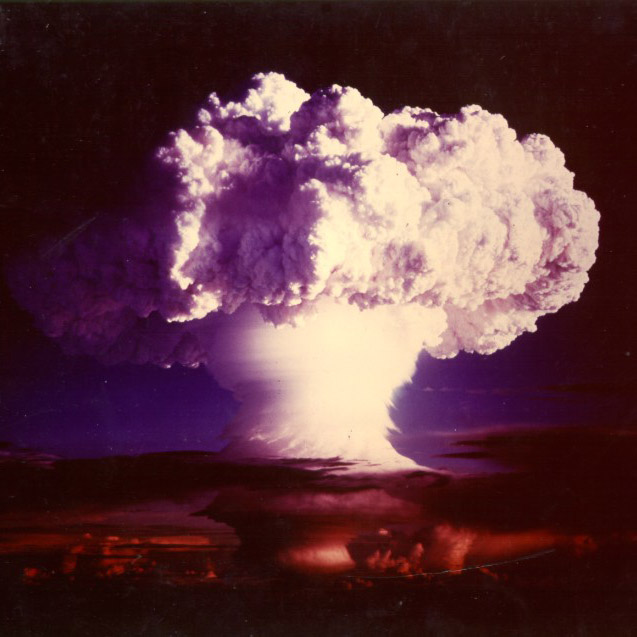Ferm
100
Fm
Grupa
Nie dotyczy
Okres
7
Blok
f
Protony
Elektrony
Neutrony
100
100
157
Ogólne właściwości
Liczba atomowa
100
Masa atomowa
[257]
Liczba masowa
257
Kategoria
Aktynowce
Kolor
Nie dotyczy
Radioaktywny
Tak
Named after Nobel laureate Enrico Fermi, one of the pioneers of nuclear physics
Układ krystalograficzny
Nie dotyczy
Historia
Fermium was discovered as a component of the debris of the first hydrogen bomb explosion in 1952.
It was identified by Albert Ghiorso and co-workers at the University of California, Berkeley in collaboration with the Argonne and Los Alamos National Laboratories, in the fallout from the Ivy Mike nuclear test.
The new element was produced by the nuclear fission of 17 neutrons with uranium-238.
It was identified by Albert Ghiorso and co-workers at the University of California, Berkeley in collaboration with the Argonne and Los Alamos National Laboratories, in the fallout from the Ivy Mike nuclear test.
The new element was produced by the nuclear fission of 17 neutrons with uranium-238.
Elektrony na poszczególnych powłokach
2, 8, 18, 32, 30, 8, 2
Konfiguracja elektronowa
[Rn] 5f12 7s2
Sixteen isotopes of fermium are known to exist
Właściwości fizyczne
Stan skupienia
Ciało stałe
Gęstość
- g/cm3
Temperatura topnienia
1800,15 K | 1527 °C | 2780,6 °F
Temperatura wrzenia
-
Ciepło topnienia
Nie dotyczy kJ/mol
Ciepło parowania
Nie dotyczy kJ/mol
Ciepło właściwe
- J/g·K
Ilość w skorupie Ziemi
Nie dotyczy
Ilość we Wszechświecie
Nie dotyczy

Opis Obrazu: Wikimedia Commons (National Nuclear Security Administration)
Fermium was first observed in the fallout from the Ivy Mike nuclear test
Numer CAS
7440-72-4
Numer CID PubChem
Nie dotyczy
Właściwości atomowe
Promień atomowy
-
Promień walencyjny
-
Elektroujemność
1,3 (Skali Paulinga)
Energia jonizacji
6,5 eV
Objętość molowa
29,1 cm3/mol
Przewodność cieplna
0,1 W/cm·K
Stopnie utlenienia
2, 3
Zastosowania
Fermium is used for scientific research purposes only.
Fermium is harmful due to its radioactivity
Izotopy
Stabilne izotopy
-Niestabilne izotopy
241Fm, 242Fm, 243Fm, 244Fm, 245Fm, 246Fm, 247Fm, 248Fm, 249Fm, 250Fm, 251Fm, 252Fm, 253Fm, 254Fm, 255Fm, 256Fm, 257Fm, 258Fm, 259Fm, 260Fm